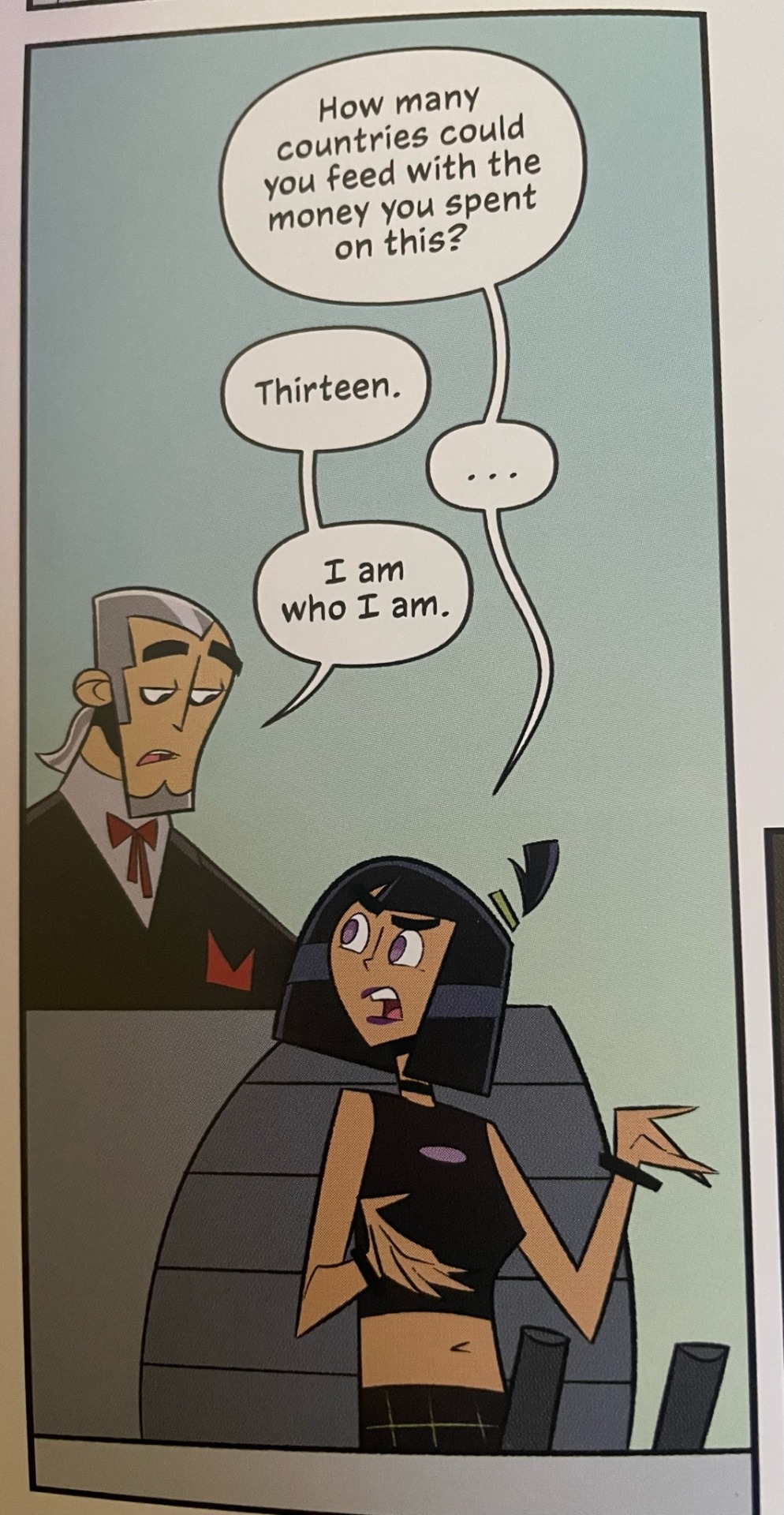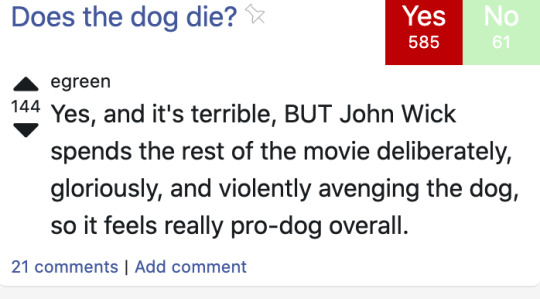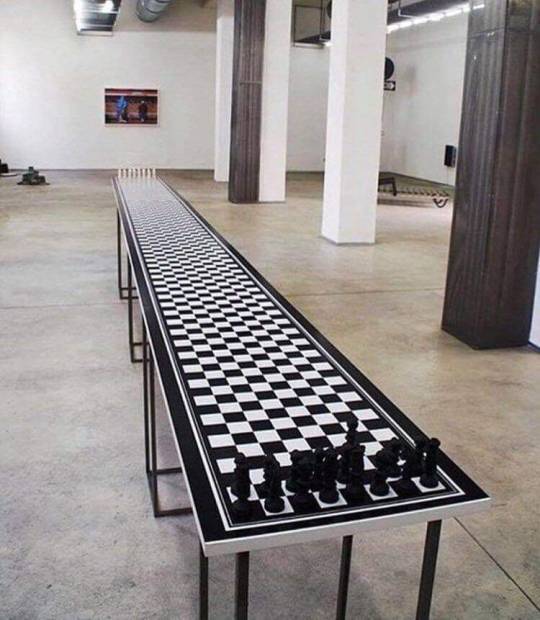Artemis, xe/xem. This is mostly a reblog blog, @a-disconcerting-bop for self posts
Don't wanna be here? Send us removal request.
Text
I'm down for relationship discourse if and only if no possibility exists of arriving at any useful conclusion.
"Is it cheating if you're on a break" what is this, a sitcom?
"Is it cheating if you're fucking two different instances of the same time traveller and the earlier one doesn't know" now we're talking.
814 notes
·
View notes
Text
Concept: a D&D adventure where the party stops to rest at a village inn where they seem to be the only guests. The village appears prosperous and well taken care of, but its inhabitants are strangely morose and blunt-spoken. Whether the party decides to investigate or attempts to move on, it quickly becomes apparent that something is terribly wrong: any effort to initiate violence or utter untruth fails as the offender is wracked with terrible pain, unkind words stick in the throat unspoken – and worst of all, anyone who attempts to leave the village becomes confused and finds themselves coming back the way they came. When (politely) questioned, the villagers will say only that the party must speak to the wizard whose tower lies to the east.
Upon reaching the wizard’s tower, the party is met by a slender, youthful-looking man with an unnaturally deep voice, who greets them with distracted courtesy, and – after making brief introductions – reveals that he knows why the party is there, and that it’s indeed all his fault. Thirty years ago, the wizard attempted to cast a blessing of peace and prosperity over the village, but the spell went awry: the enchantment proved to be much more powerful and long-lasting than intended, and its notion of what constitutes a breach of the peace far more expansive. Not only does it prohibit physical violence, but also insults, lies both overt and of omission, and simple failures of courtesy. Even leaving the village seems to be construed as an act of abandonment, and therefore of emotional violence.
Luckily, the wizard believes he’s discovered why the enchantment has become a curse. Though it was intended to ensure that people would be kind to one another, it ironically rendered its own fulfillment impossible, as the villagers began to treat each other well out of fear of reprisal rather than true good will. A sufficiently great act of genuine kindness, unalloyed by self-interest, would shatter the enchantment in an instant – but how can such a thing be brought about, in a place where all have been made strangers to love?
11K notes
·
View notes
Text
I don’t disagree that D&D‘s nine-point alignment system has issues, but I think it’s interesting to look at how those issues are a direct consequence of how the framework of alignment has developed over the course of the game’s history.
Folks tend to think of D&D as being based on epic, good-versus-evil fantasy in the mode of J R R Tolkien - which is totally understandable, given that many highly visible elements of the game, like having elves, dwarves and hobbits as playable races, are clearly lifted directly from Lord of the Rings. However, in terms of its actual storytelling conventions, the game owes a much larger debt to swords-and-sorcery fantasy and weird fiction - especially authors like Jack Vance, Robert Howard and Michael Moorcock.
One of the common features of these genres - and of Moorcock in particular - is the notion of an eternal battle between cosmic forces of Order and Chaos. These forces are characterised as vast, inhuman and largely alien to conventional morality. Early versions of D&D followed suit and included not the more familiar nine-point alignment system, but a three-point system: Lawful, Neutral and Chaotic. Though player characters weren’t necessarily expected to take an active role in this cosmic battle, it was assumed that most would be notionally aligned with one of these forces. (Indeed, this is why it’s called “alignment”!)
Trouble is, folks who weren’t familiar with the source material tended to assume that “Lawful” was a code-word for “good”, and “Chaotic” for “evil”. (Or possibly the other way ‘round, depending on their political bent.) Subsequent versions of the game attempted to clarify the matter by adding the Good/Evil axis to complement the Law/Chaos axis. The idea was to emphasise that the universe didn’t particularly care if you were a good or bad person, as long as you served the appropriate cause. As far as the monstrously inhuman gods were concerned, the most virtuous saint and the most brutal tyrant were morally equivalent, as they were equal in their commitment to cosmic Order. Likewise, a heroic freedom fighter and a cannibalistic serial killer were equally good exemplars of cosmic Chaos.
Of course, that was a really weird perspective, so a lot of players continued to ignore the whole “cosmic battle between Order and Chaos” thing and simply treated “Lawful Good” as “Extra Good”, and similarly, “Chaotic Evil” as “Extra Evil”. Compounding the issue, while later iterations of the game still included the notion of Law and Chaos as cosmic forces, they de-emphasised the battle between Law and Chaos in favour of foregrounding more accessible Good-versus-Evil conflicts, and discarded the notion that player characters would be actively aligned with those cosmic forces - yet they retained the nine-point alignment grid as a legacy feature.
With the nine-point grid still in place, but its original rationale now downplayed or absent, it was necessary to find alternative justifications for it. The Law/Chaos axis gradually shifted from being described in terms of cosmic principles to being described in terms of social conventions: a Lawful character was now merely one who believed in a well-ordered society and was inclined to respect and obey legal authority. This is where awkward questions like “how does a Lawful Good character react to unjust laws?” rear their ugly heads; note that this question wouldn’t even be on the radar in earlier versions of the alignment framework, since human laws don’t necessarily serve the cause of cosmic Order (and may well serve Chaos).
And that’s basically where we are now: the nine-point alignment grid is a semi-successful patch job on a feature designed to give rules-based weight to an aspect of the game’s default/assumed setting that no longer exists, subsequently kept around as a legacy feature. It’s not really surprising that its conceptual basis is full of glitches and weird edge cases - really, it’s kind of amazing that it works at all!
2K notes
·
View notes
Text
{sports} : Baseball :: [sports] : Basketball
294 notes
·
View notes
Text
beastie boys music is funny as hell one of them will say a line and then the other two will say a completely unrelated line
73K notes
·
View notes
Text
what do they put in large rocks that make u just want to. stand on it.
101K notes
·
View notes
Text

This made me laugh. At least he’s honest about how awful he is.
16K notes
·
View notes
Note
[In response to your post #61507222844] So I know that this was more than a year ago, but I'm pretty sure she deflected *two* laser beams with *one* kick, and I'm not sure which is more awesome.
(With reference to this post here.)
more than a year ago


Technically you are correct.
1K notes
·
View notes
Text
actually THIS is my new favorite doesthedogdie comment

114K notes
·
View notes
Text
I'd love to know what it is about the Power Rangers franchise that nobody involved ever has normal scandals. I just looked up the guy who played the Red Ranger in 1993 to see what he's been up to lately, and apparently the answer to that is "pleading guilty to masterminding a conspiracy to help small businesses commit paycheque assistance fraud and trying to sell t-shits with Adolf Hitler quotes on them" – and that's just in the last eight months.
3K notes
·
View notes





